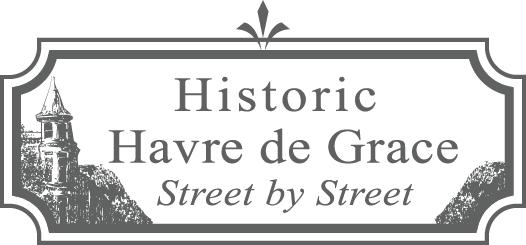Back to All Listings
100 Giles Street, The Decoy Museum, 1921; rebuilt 1992
Stop #36 on The Lafayette Trail
This stucco-over-brick structure was built originally in 1921 as a service building for the Hotel Bayou and housed an indoor swimming pool and the heating plant (called "Hotel Bayou Baths"). It is shown on the 1930 Sanborn Insurance Map with the notation that it was of “fire proof construction” and the floor was concrete. Guests of the Hotel Bayou, such as Babe Ruth and baseball’s Ty Cobb, could walk over there and enjoy the luxury of the indoor “baths.”
In the 1930s, the building followed the demise of the Hotel Bayou and was not maintained. In 1953, the local Dr. Charles Foley, Sr. (1895-1957) and his family purchased the Hotel Bayou and this building with its heating plant. Jay Narvell and other locals have fond memories of playing hide-and-seek in the empty building prior to its reconstruction, although Rob Pennington recalls that going in there was scary. Some of the kids who used to sneak into it found two tunnels underneath the back of the building and were convinced there was a coffin in there. It later turned out to have been a duck hunter’s old sinkbox!
After the death of Dr. Charles Foley, Sr. the building was owned by his son, Dr. Charles Foley, Jr. (1927-2006) who, with his sisters, donated the Bayou Villa and this building to the City of Havre de Grace in 1976.
Its conversion to a museum was started in 1981 by a group of volunteers who established a nonprofit to preserve the historical and cultural legacy of waterfowling and decoy making on the Chesapeake Bay. But a lot of work had to be done to fill in the surrounding shallows and provide stability; construction began in 1984. The Museum was formally opened in November 1986 with collections of decoys made by R. Madison Mitchell, Charlie Joiner, Charlie Bryant, Bob McGaw and others. Also displayed were various tools and equipment used in decoy making. Jay Narvell says that the boardwalk and gunning boat scene now on the first floor was the actual swimming pool of the Hotel Bayou and a large boiler was used to heat the water.
Captain Bill Collins bought Madison Mitchell’s decoy and paint workshop around 1981, and operated it as Upper Chesapeake Bay Decoys until 1987. Captain Bill then moved the actual workshop onto the grounds of the Decoy Museum where the interior has been preserved and the shop is now the property of the Decoy Museum. Collins had met Mitchell in the early 1970s when Mitchell hired him as an apprentice in his funeral home but when business was slow, Collins also learned to carve in Mitchell’s decoy shop. Some of today’s carvers sometimes demonstrate this unique folk art here in Madison’s old shop behind the museum.
In 1988, construction of the second floor was begun and the area of the gift shop and elevator was added. In 1992, they celebrated the grand opening of the second floor. On the grounds is another entry to the Promenade and a brick walkway serving as an alternate route to the Maritime Museum and the Concord Point Lighthouse.
The Decoy Museum today provides a detailed picture of the evolution of this very special folk art practiced by many Havre de Grace locals and explains the transition from gunning decoys to today’s decorative decoys. The Carvers Gallery showcases the work of individual carvers while a display, “Gunning the Flats,” shows local artifacts of hunting the Susquehanna Flats in years past.
County Records
Built 1940. 16,138 sq ft, 5.59 acre lot, detached garage.
Built 1940. 16,138 sq ft, 5.59 acre lot, detached garage.
